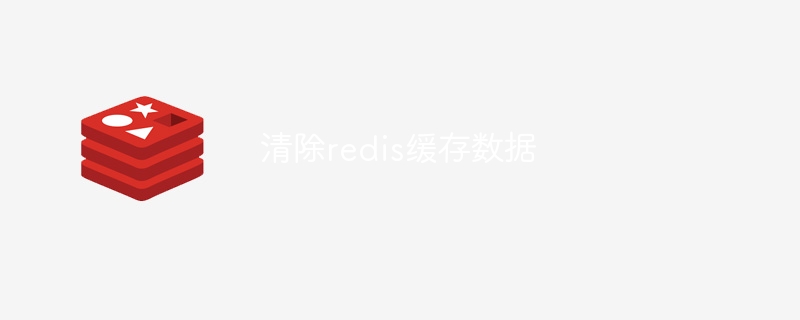Clear redis cache data
- 下次还敢Original
- 2024-04-19 18:31:021357browse
Commonly used Redis cache cleaning methods include: FLUSHALL: clear all key-value pairs. DEL: Delete the specified key. UNLINK: Asynchronously delete the specified key. EXPIRE: Set the expiration time of the key, which will be automatically deleted after expiration.

Clear Redis cache data
Common methods to clear Redis cache data:
- FLUSHALL: Clear all key-value pairs in Redis.
- DEL key1 key2 ...: Delete multiple specified keys.
- UNLINK key1 key2 ...: Asynchronously delete multiple specified keys.
- EXPIRE key seconds: Set the expiration time for the specified key so that it will be automatically deleted after the specified time.
Basis for choosing the cleanup method:
- Full clear: Use the FLUSHALL command to quickly and completely delete all cached data.
- Delete specific keys: Use the DEL or UNLINK command to delete specific keys that are not needed.
- Set the expiration time: Use the EXPIRE command to set the expiration time for the key, and it will be automatically deleted after expiration.
The difference between UNLINK and DEL:
- Atomicity: UNLINK is atomic, that is, all specified keys or all Delete or delete nothing. DEL is non-atomic and may cause partial bond deletion to fail due to network issues or other reasons.
- Asynchronicity: UNLINK is executed asynchronously and will not block the Redis server. DEL, on the other hand, is executed synchronously and may block the server during key deletion.
Usage example:
-
Clear all key-value pairs:
<code>redis> FLUSHALL</code>
-
Delete a specific key:
<code>redis> DEL name age</code>
-
Delete a specific key asynchronously:
<code>redis> UNLINK name age</code>
-
Set the expiration time for the key:
<code>redis> EXPIRE name 600</code>
The above is the detailed content of Clear redis cache data. For more information, please follow other related articles on the PHP Chinese website!
Statement:
The content of this article is voluntarily contributed by netizens, and the copyright belongs to the original author. This site does not assume corresponding legal responsibility. If you find any content suspected of plagiarism or infringement, please contact admin@php.cn
Previous article:What is the difference between redis and mysqlNext article:What is the difference between redis and mysql

